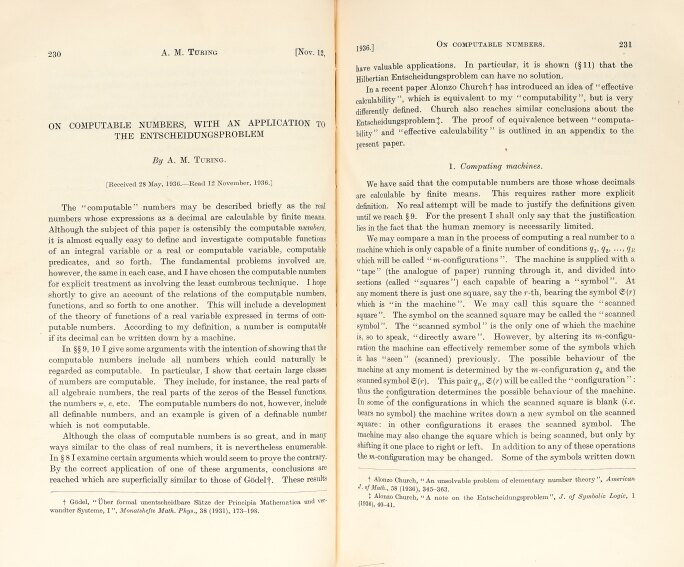S otheby's upcoming sale of the Erwin Tomash Library on the History of Computing on 18 and 19 September in London will feature a selection of works by Alan Turing, the mathematical genius who cracked the Enigma code and who is considered the father of modern computer science. More recently, he was portrayed by Benedict Cumberbatch in The Imitation Game. Here are 7 facts about this important figure.
1. His genius was apparent from a young age. At 14 he was able to solve advanced problems with no knowledge of calculus, and he extrapolated Einstein’s likely objections to Newton’s laws of motion before he’d read about them.
2. Through his work in breaking the Enigma code during the Second World War, he was responsible for saving millions of lives. It is thought that without his contribution, the war would have gone on for many more years.
3. Turing was fascinated by daisies and made major contributions to biology, specifically the field of morphogenesis, which deals with the formation of shapes in nature. He was particularly interested in the relationship between Fibonacci numbers and leaf arrangements, and formed some of the earliest mathematical models about how biological shapes emerge.
4. As with many geniuses, Turing had his fair share of eccentricities. He would chain his mug to a radiator to prevent others stealing it, and instead of replacing the faulty chain on his bike, he would count the pedal strokes as he cycled and dismount to fix it just before he knew it would come off.
5. He is considered the father of modern computer science thanks in part to his 1936 article on the Universal Turing Machine, where he pioneered the idea of electronic memory. Instead of a computing machine having only one function, he proposed a machine that would store coded functions in memory, and enable the user to carry out any computable function on the same machine. This laid the foundations for the digital computer.
6. He also had an interest in the relationship between human consciousness and the idea of computerised consciousness, or artificial intelligence. He proposed that the best way to measure AI was to observe how far a computer could fool an observer into thinking it was human. His test, the Turing test, is used to this day.
7. Turing has inspired numerous depictions and tributes in pop culture, perhaps most famously in the film The Imitation Game, where he was played by Benedict Cumberbatch who said of his importance as a scientist: he’s “…up there with Charles Darwin; he should be on banknotes”. He was also the subject of an orchestral piece by the Pet Shop Boys, which was premiered at the Proms in London in 2014, and a 1986 play by Hugh Whitemore called Breaking the Code.
CLICK HERE to view the full sale catalogue.





